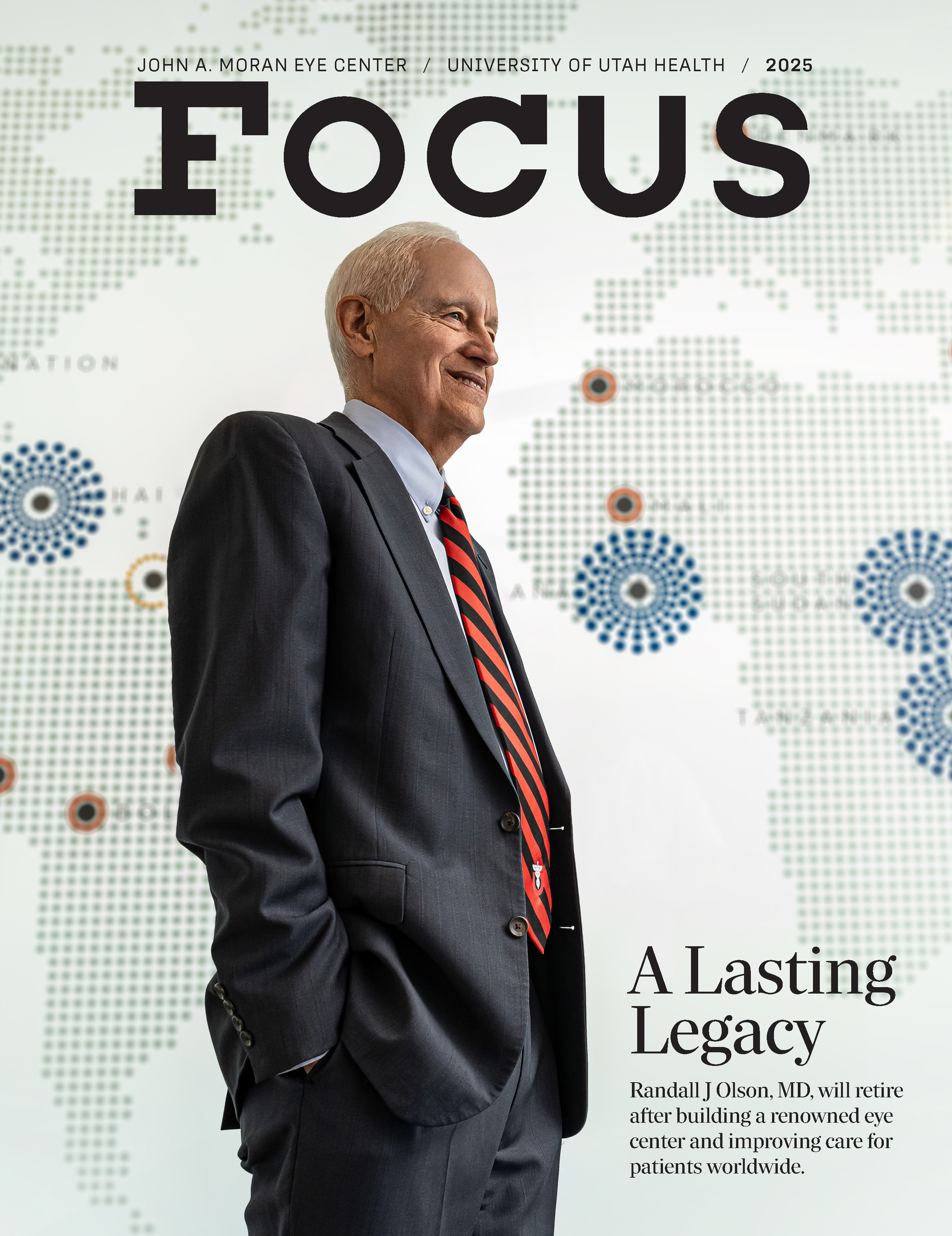
.jpeg)
Celebrating 75 years of intraocular lens advancements that have improved care for millions of cataract patients.
On November 29, 1949, Sir Harold Ridley performed a surgical procedure to replace a clouded lens in the eye of a London cataract patient with the world’s first artificial one. His invention, dubbed the intraocular lens (IOL), rocked the ophthalmic world and started a revolution in lens design.
Today, the John A. Moran Eye Center’s IOL experts are building upon Ridley’s legacy by advancing lens technology to achieve results he could not have imagined.
“Now, replacing a cloudy lens by implanting one of the many sophisticated IOLs available is a quick, life-changing procedure,” said Nick Mamalis, MD, co-director of the Intermountain Ocular Research Center (IORC) based at Moran. “IOLs not only restore sight but can also significantly improve it for some patients.”
THANK YOU, SIR HAROLD
Cataracts, a clouding of the eye’s natural lens, can lead to blurry vision or, in extreme cases, blindness. Generally caused by natural aging, cataracts may also result from exposure to ultraviolet light, injury, or a congenital condition.
Before Ridley’s pioneering work, surgeons treated cataracts by removing a patient’s natural lens. After a lengthy recovery, patients wore thick lenses, often called “Coke bottle glasses,” that helped with reading but distorted vision when walking.
Ridley, a British surgeon who cared for World War II pilots with eye injuries, noticed that pieces of plastic from shattered Spitfire fighter plane windows did not cause inflammation when they entered soldiers’ eyes. He began to explore the possibility of using the material to create an artificial lens that could be implanted into the eye and replace glasses.
Though Ridley faced criticism from peers who objected to placing anything in the eye, he continued to promote and refine his invention. Only later in life would he receive the recognition he deserved.
Most modern IOLs are made of flexible silicone or acrylic as researchers continue to test and refine the technology. Mamalis and co-director Liliana Werner, MD, PhD, lead the field.
“We all in the ophthalmic community are grateful to Sir Harold Ridley,” said Werner. “At Moran, we are finishing what he started.”
Founded under the visionary leadership of Moran CEO Randall J Olson, MD, a renowned cataract surgery expert, the nonprofit research center examines the design, materials, and complications of lenses under development for companies and physicians worldwide. In recent years, the center has studied IOLs and related devices that allow surgeons to adjust the magnification power of a lens once it has been placed in the eye without additional surgery.
Capitalizing on better-understood properties of optics and physics, companies continue working to develop the perfect IOL, capable of replicating the young eye’s ability to change focus. Recently, the IORC evaluated at least four projects related to such accommodative lenses under development.
Moran offers the widest selection of IOLs in the Mountain West, with more than 5,000 individual lenses made by four global manufacturers. Moran surgeons performed nearly 4,500 cataract surgeries and lens extractions in Fiscal Year 2024.
“In the U.S., there are over 3 million cataract surgeries with IOL implantation every year,” Werner said. “One day, most of us will need to choose one.”
Time for Cataract Surgery?
Choosing the type of intraocular lens (IOL) used during your cataract surgery is a big decision. Start by speaking with your ophthalmologist about what’s best for your vision needs, lifestyle, and budget. Each of your eyes will be precisely measured and analyzed to help determine your options. Here is what is available now:
- Monofocal lenses provide the best possible vision, either near or far. Most patients choose to have their monofocals set for distance vision and use reading glasses. Others may choose to have their focus set for reading and must utilize prescription glasses for distance. Some choose “monovision”—one eye set for distance vision and one for close-up.
- Multifocal IOLs function similar to bifocal or trifocal eyeglasses, allowing you to see objects near and far.
- EDOF (extended depth of field) IOLs work by creating a single elongated focal point to enhance “range of vision” or “depth of focus.” Patients may still need low-powered reading glasses.
- Toric lenses function like monofocal lenses and can be set for distance, intermediate or near. They are specifically designed to reduce corneal astigmatism.
- Light adjustable lenses offer a unique advantage over traditional lenses. Your surgeon will use a special UV light device to make precise adjustments to the power of a lens after it has been implanted in your eye.
